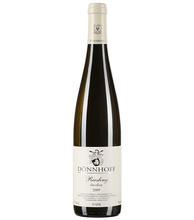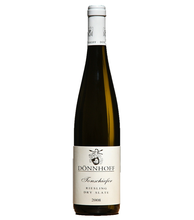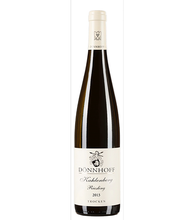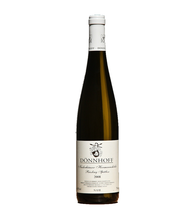The Rheingau and other German delights

Before arriving in Rheingau, my expectations were that the scenery would be beautiful, the air would be crisp and cool and that I would find beautiful dry wines and some interesting sweeter styles. I was surprised by the warmth - both in temperature at over 30C each day and in the people, who were welcoming, friendly and helpful everywhere we went. They are extremely proud of the wines they produce and the emphasis on local wine in restaurants reflect the role the whole community plays in promoting some of the finest wine regions in the world.
Our first visit took us to the Nahe wine region, where the vineyards rise from the banks of the River Nahe, a tributary of the Rhine. While the river is quiet and meandering, the hills surrounding it were created from explosive volcanic activity resulting in 180 types of soil! The Nahe wine region is one of the tiniest in Germany and one of the furthest North. For fans of German history, one of the Nahe vineyards, Schlossbockelheim, is where the border between the Kingdoms of Bavaria and Prussia used to be, conjuring images of Ludwig II, Bismarck and even Napoleon!
Weingut Dönnhoff is found in the sleepy little village of Oberhausen an der Nahe and has been in existence since the 18th century. Cornelius Dönnhoff is the winemaker and his wife Anne is the winery and vineyard manager. A young couple in their thirties, they have taken the reins from Cornelius' dad, Helmut Dönnhoff, who produced his first vintage in 1971. They want to make their production smaller and more focused, emphasising the quality of their vineyards. All the work is done by hand and the Dönnhoffs have a family approach to the work. When its picking time, they invite the same Polish families to come every year. The families live in the Dönnhoff houses and are treated as part of the family. They use German oak during vinification, with Rieslings touching old oak first, then stainless steel. Each of the single vineyard Dönnhoff wines are beautiful expressions of the unique soils found there. From grey slate to loam and quartzite to red sandstone, the terroir defines the wine. What a great way to start our visit!
- Dönnhoff Riesling
- Dönnhoff Tonschiefer Riesling Dry Slate
- Dönnhoff Hollenpfad Riesling Trocken
- Dönnhoff Kahlenberg Riesling Trocken
- Dönnhoff Niederhäuser Hermansshöhle Spätlese
Next up was Rüdesheim am Rhein, the epicenter of the Rheingau wine region. A Unesco world heritage site, Rüdesheim is the second most visited tourist site in Germany. Cruise ships full of Australian and American tourists filled the narrow streets lined with half-timbered weinstubes, restaurants and tourist shops. The main attractions are the wide, romantic Rhine River, the landscape of vineyards and the Niederwalddenkmal monument to the unification of Germany. To escape said tourists, we took the cable car trip up over the spectacular vineyards to take a look at the monument that was built in 1871. Magnificent. That's all I need to say.
We walked through a residential district to get to Weingut Leitz and we almost didn't notice the well-hidden sign on what looked like just another house in the community, as there were no vineyards. But once inside the compound, this impeccably spotless oasis revealed some delicious wines! We learned that we had actually visited some of their vineyards on our cable car ride up to the monument, as Bergs Rottland, Roseneck, and Drachenstein were below us. The Leitz wines are classic Rheingau - peaches, lime and white pepper. Their Eins Zwei Dry Riesling is probably the best introduction to German dry Riesling I've ever had!
- Leitz Eins Zwei Dry Riesling 2015
- Leitz Rüdesheimer Berg Kaisersteinfels Riesling 2012
- Leitz Rüdesheimer Ehrenfels Berg Schlossberg GG Riesling Trocken 2013
- Leitz Rüdesheimer Berg Rottland Riesling Trocken 2011
Our final stop was further south, in the Franconia wine region or Franken, as its called in German. Our destination was Bürgstadt in the westernmost part of Franconia along the River Main, where the weather is warmer and where both high quality Pinot Noir (Spätburgunder) and the more rare Frühburgunder flourishes. Frühburgunder is a mutation of Pinot Noir that ripens early, so these are the first grapes to make it to the winery for vinification.
Weingut Fürst makes arguably the finest Pinot Noir in Germany, in my humble opinion! The Fürst winery has been going since the 17th century and their vineyards are on iron-rich red sandstone soils. Paul and Sebastien Fürst focus entirely on quality in the vineyard and in the cellar. They don't irrigate and they even make their own compost! Their Pur Mineral range is the first picking of all the Riesling vineyards and has the most freshness. They aim for a Burgundy style of Pinot Noir, with balanced acidity that pairs well with food. Their Spätburgunder Centgrafenberg GG is as delicious and delightful as any Burgundy I've had the privilege to drink. Love it, love it, love it!
These are great wines made by wonderful people. A perfect match for The Wine Reserve!




